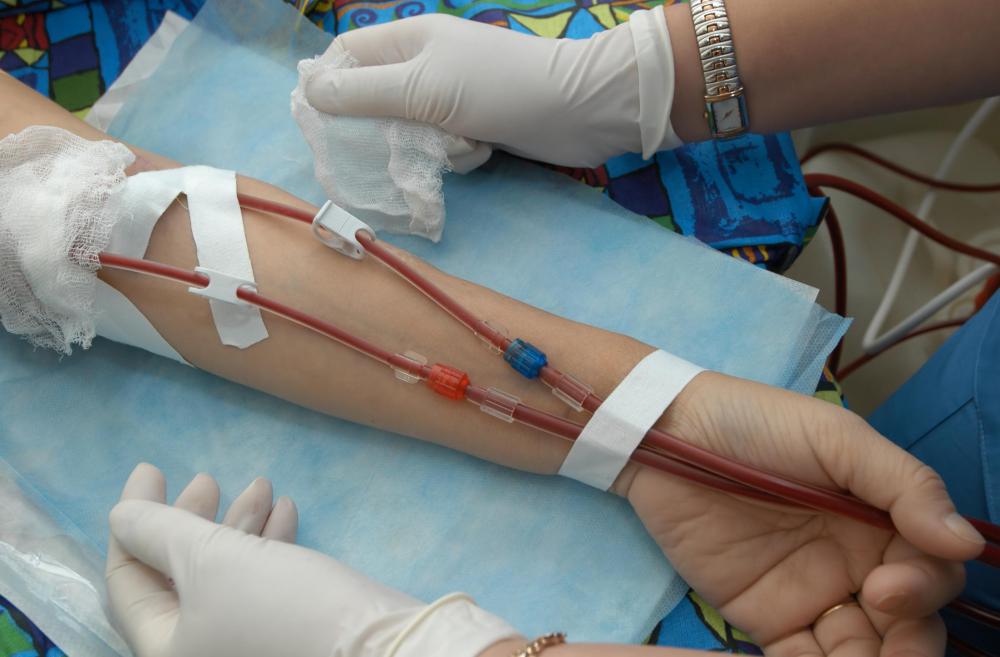At WiseGEEK, we're committed to delivering accurate, trustworthy information. Our expert-authored content is rigorously fact-checked and sourced from credible authorities. Discover how we uphold the highest standards in providing you with reliable knowledge.
What Are the Different Types of Coagulation Disorders?
The term "coagulation disorders" refers to syndromes or conditions that prevent blood from clotting properly; such disorders can cause the body to produce too many clots, or can prevent it from clotting after an injury. There are many different coagulation disorders. Four common coagulation disorders are Von Willebrand disease, hypoprothrombinemia, hyperhomocysteinemia and antiphospholipid syndrome. These diseases lead to a variety of medical problems, but can be manageable chronic conditions.
Von Willebrand disease is an inherited disorder which causes patients to bleed longer and more excessively than needed. Their blood is missing a clotting factor called Von Willebrand factor, and without this factor the blood takes longer to clot and stop bleeding. Von Willebrand disease can cause frequent nose bleeds, blood in the urine or stool, bleeding of the gums, bleeding from shaving and easy bruising. Women can also suffer from large clots in menstrual flow and heavy bleeding. This disorder can cause complications such as anemia, swelling, pain and death.

Hypoprothrombinemia (also known as factor II disorder) is caused when a patient is born with too little of a clotting factor called prothrombin in their blood. Without prothrombin, there is a high risk of excessive bleeding. Low prothrombin is typically caused by low traces of vitamin K in the body, which helps the lever cells synthesize prothrombin.

Another coagulation disorder is hyperhomocysteinemia, which is genetic. Patients usually have high levels of homocysteine, an amino acid. Those who suffer from hyperhomocysteinemia have a high risk of clotting that can be caused by deficiencies of vitamin B12, folate, vitamin B6, and cystathionine beta-syntase. A few of the symptoms are bone loss, thrombosis, and blood vessel abnormalities. Risks associated with hyperhomocysteinemia are skeletal and eye problems or even mental retardation, but the disorder can be treated with vitamin supplements.

Antiphospholipid syndrome (also known as APS or Hughes syndrome) is a rare, inherited disorder that causes large clots to form in the arms and legs. This can cause deep vein thrombosis (DVT), which can be life threatening. Clots can form in the internal organs as well. Symptoms of this disorder are clots in the legs, clots traveling to the lungs, strokes, and multiple miscarriages or stillbirths.
Treatments for the types of coagulation disorders vary based on the physiological conditions that contribute to their development. Some disorders can be managed with the regular use of supplements or medications designed to support the body's optimization of existing clotting agents. Others, including those caused by the absence of clotting factor in the blood, are best managed with routine blood or plasma transfusions, which allow the transplanted clotting factors to fill in for the body's deficiencies.
AS FEATURED ON:
AS FEATURED ON:













Discuss this Article
Post your comments